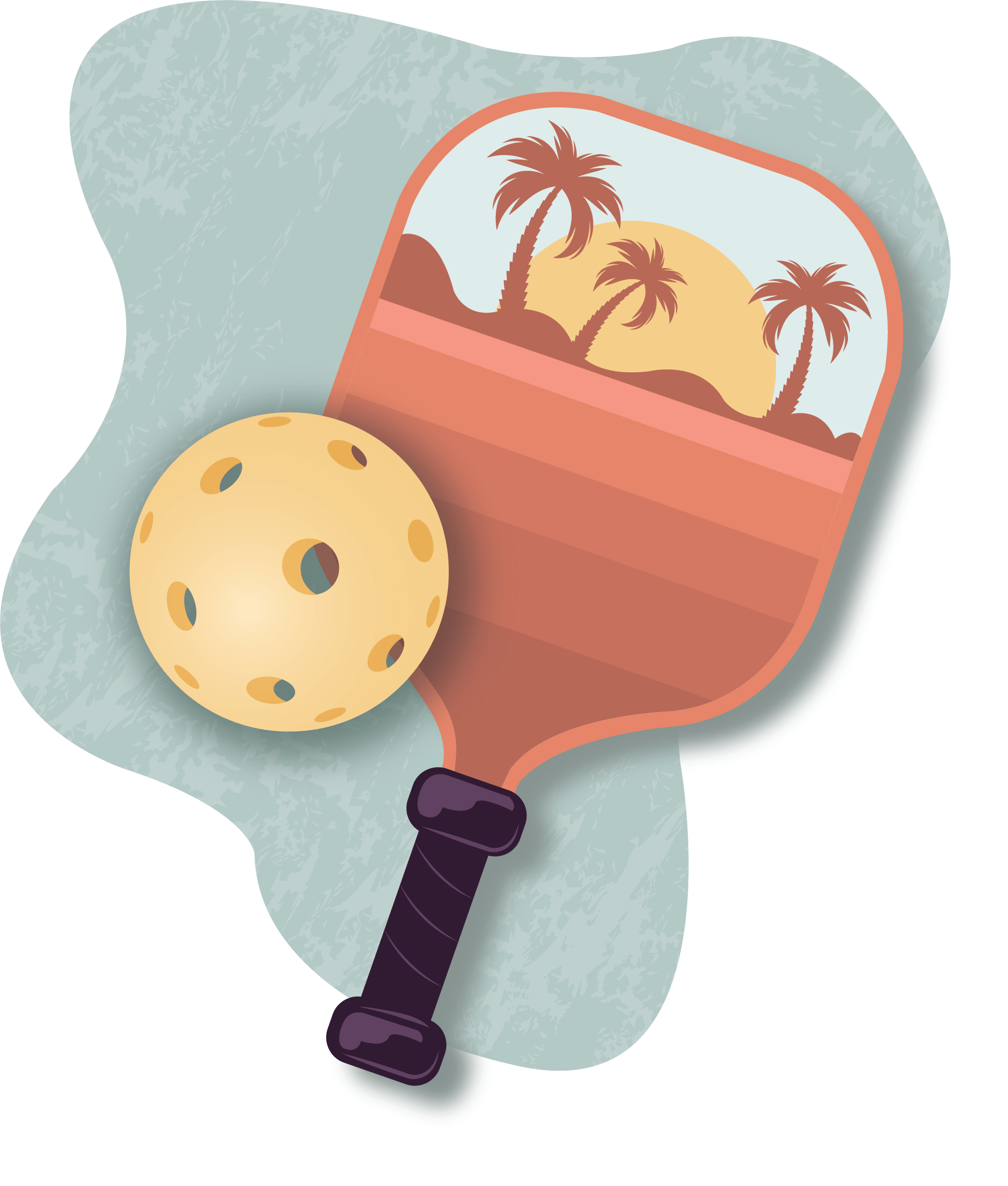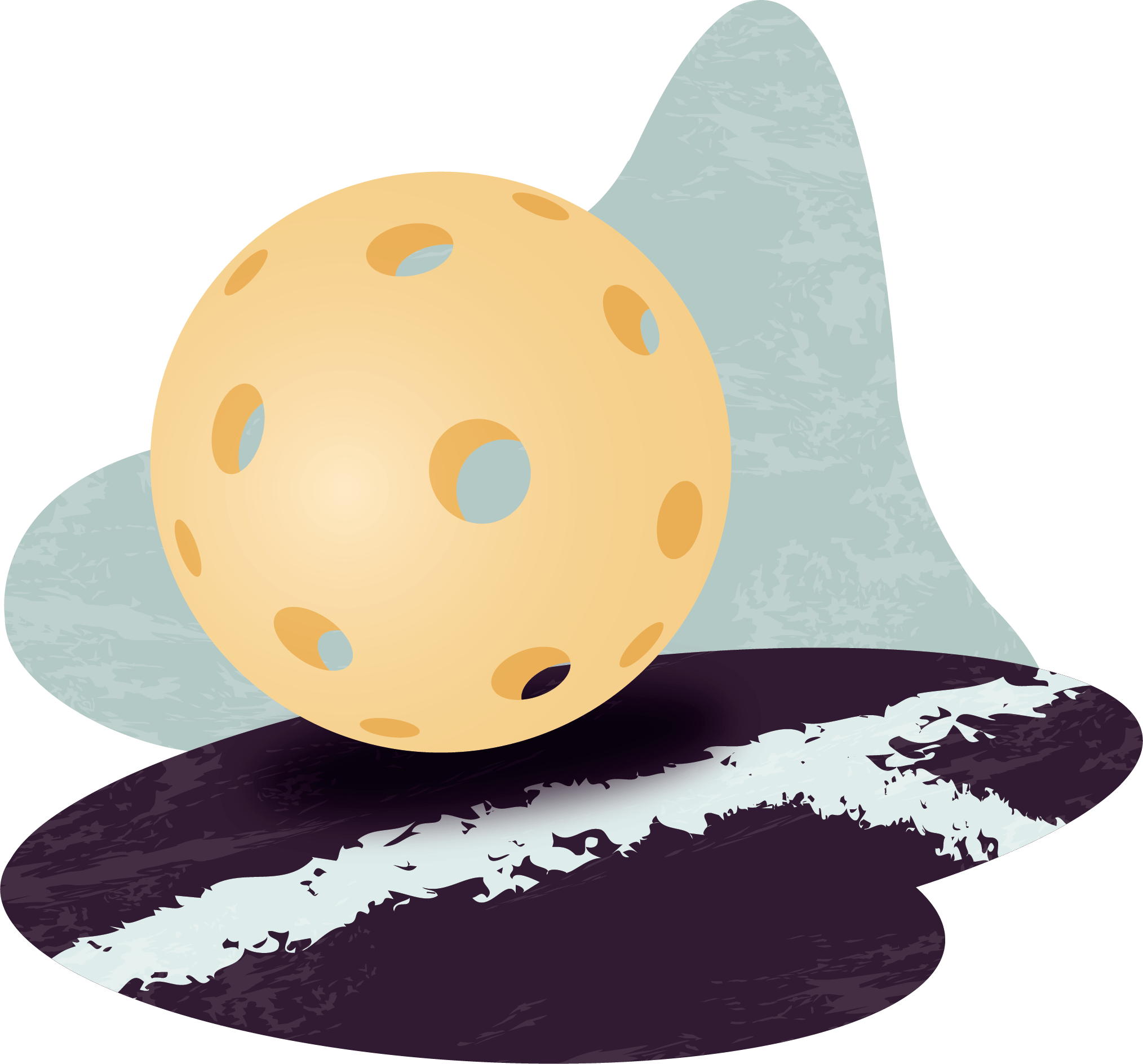Don’t Know Much about Pickleball?
If someone shouts at you to “stay out of the kitchen,” it either means they’re cooking a nice meal for you or—more than likely in 2023—you’ve joined the throngs of Americans having a smashing time on the pickleball court.
Pickleball, the whimsically named paddle game, is fast becoming everyone’s favorite addiction, er, pastime. In fact, it’s the fastest-growing sport in the country, with the total number of picklers reaching more than 5 million at the end of 2022—an increase of 40 percent since 2019, according to the Sports and Fitness Industry Association (SFIA).
Lately, pickleball has gotten lots of buzz from famous folks who love the game, including George Clooney, Leonardo DiCaprio, Bill Gates, and Kim Kardashian, and the pandemic-driven need to find outdoor activities didn’t hurt its popularity either.
Football legend Tom Brady is such a fan that, in 2022, he joined a bevy of superstar athlete-investors buying stakes in professional pickleball teams. High-profile names like LeBron James, Kevin Durant, and Maverick Carter are among those funding the expansion of Major League Pickleball (MLP). The budding MLP launched in 2021 with eight teams and has plans to grow to 24, with six professional tournaments scheduled for 2023.
A Mixing Pot
One of pickleball’s defining charms is its ability to bring people of different abilities and ages together for a fast-paced good time. It was this high fun factor that impressed David Damare, a mortgage lender and a former tennis player from Raleigh, North Carolina.
Damare says he has gotten into a habit of playing pickleball two or three times a week when he’s not traveling. He says the sport is silly yet serious, easy yet competitive, and highly accessible for all levels of players from professional athletes to octogenarians.
It’s a winning mix of attributes that draws the crowds. A park in Damare’s area recently converted two tennis courts to eight pickleball courts. Since then, he says, the courts are packed at all hours. “It’s all types of people, from couples in their early 20s and late teens all the way up to literally 80-year-olds that are playing,” he says. “That’s why you have to get there at 7:30 in the morning—because the retirees come at 8:00.”
“It’s a very equalizing type of game. Older and younger people can easily play together, and it can be competitive because you’re not trying to hit the ball as fast [as tennis],” Damare says. “It’s less about power and more about eye-hand coordination, which makes it more open to all ages.”
Once they tried it, Damare and many of his tennis buddies couldn’t stop playing, quickly accumulating a pickleball text group of 30 to 40 guys. “It’s not as hard on your body as tennis, but you do get a pretty good workout,” he says. “The ball is zinging back and forth, so your hand-eye coordination and keeping your head in the game are really imperative.” The community of picklers is welcoming to newcomers, and the mental focus the game requires seems to get people hooked.

Not So Serious
Pickleball hails from the Pacific Northwest. It was invented in 1965 by three friends—Congressman Joel Pritchard, Barney McCallum, and Bill Bell—on Bainbridge Island in Washington State. To entertain their kids, they patched together the first games with an assortment of paddleball, ping-pong, and badminton equipment and played on a badminton court with a hard plastic Wiffle ball.
With their families, they made up silly rules and terminology as they went along and took the name from one of their families’ pet dogs, Pickles.
Although pickleball is mostly a social game that doesn’t take itself too seriously, it can also be intense and competitive. Another thing that makes it highly accessible is that pickleball doesn’t require high levels of strength or athleticism since the 44-by-20-foot courts are much smaller than standard tennis courts. Also, the ball is surprisingly lightweight and is only served underhand, which requires less force.
Pickleball’s kitchen rule sets it apart from other racquet sports. Players get a fault if they step into the 7-foot rectangle next to the net, a zone called the kitchen or the non-volley zone, when volleying, which means hitting the ball without letting it bounce.
When serving, the ball is required to bounce once on the return and then bounce once again when it is hit back to the other side. After that, players can choose either to volley or hit the ball after a bounce. When volleying, they must stay out of the kitchen. Since players can’t play close to the net and keep smashing the ball from there, pickleball becomes more about placing the ball skillfully into intentional zones, rather than hitting it forcefully.
That makes pickleball the rare sport that can put a grandma in her 60s on a level playing field with elite athletes. And that’s not a metaphor—it’s a real-life event.
Last summer, Meg Burkardt, an attorney from Lawrenceville, Pennsylvania, joined a pickup game in the park with three young men she did not know. She could tell they were pickleball beginners and lent one of them her racquet.
After partnering with “the guy in the green shirt” and beating the pants off the other two, she learned that they were T.J. Watt, Minkah Fitzpatrick, and Alex Highsmith of the Pittsburgh Steelers defense. It was the crowd of spectators that had gathered that eventually tipped her off. The funny encounter went viral on social media after Burkardt’s daughter posted that “my mom whooped some Steelers in pickleball today lol.”
“These guys are so fast and so athletic and have really quick hands,” Burkardt told triblive.com. “Each game, they were getting exponentially better.”

Give It a Try
You don’t need much to get started in pickleball, just some paddles, some indoor or outdoor Wiffle balls, and a pickleball court. Any loose-fitting, comfortable clothing will do. Online vendors such as pickleballcentral.com, totalpickleball.com, and Amazon sell many inexpensive wooden or composite racquets that are suitable for beginners.
There are pickleball venues in every state. They’re often located in schools, parks, YMCAs, and community recreation centers. You can easily locate a court in your area by entering your zip code in the appropriate form on USA Pickleball’s places2play.org or by searching the Places2Play mobile app. Its database lists over 38,000 indoor and outdoor courts at nearly 10,000 locations.
The official rules are available online through USA Pickleball, but the best way to learn is just to visit a local court and give it a try. You can connect with potential practice partners by searching “pickleball groups near me” or joining Facebook pickleball groups. Soon enough, you’ll be the one yelling about the kitchen.
Pickleball Patter
A sampling of pickleball terms that may sound silly, but picklers take seriously.
- Kitchen: The non-volley zone, a 7-foot rectangle next to the net on both sides
- Pickled: Losing the game without scoring any points
- Dill ball: A ball in play that has bounced once and is inbounds
- Dink: A soft hit that lands just beyond the net, often in the kitchen
- Flapjack: A shot that must bounce once before it can be hit
- Erne: An advanced and often surprising shot that is hit from outside the court and usually close to the net (pronounced “Ernie”)
- Bert: Same as an Erne but on your partner’s side of the court instead of your own
- Volley llama: Illegally hitting a volley from the kitchen